Gardens thrive when design meets intention, and the right garden layout turns even the tightest space into a sanctuary that feeds people, pollinators, and the planet. Below you’ll find twenty distinct garden layout ideas—each one a compact, 100-to-120-word lesson packed with practical steps and fresh inspiration. From classic potagers to wildlife corridors, every entry highlights tangible benefits, clear actions, and motivating details so you can choose a style or mix-and-match elements that best fit your climate, schedule, and dreams. Enjoy exploring these possibilities and watch your yard transform into an ecosystem that reflects both creativity and care.
1. Four-Square Kitchen Garden Layout for Easy Rotation
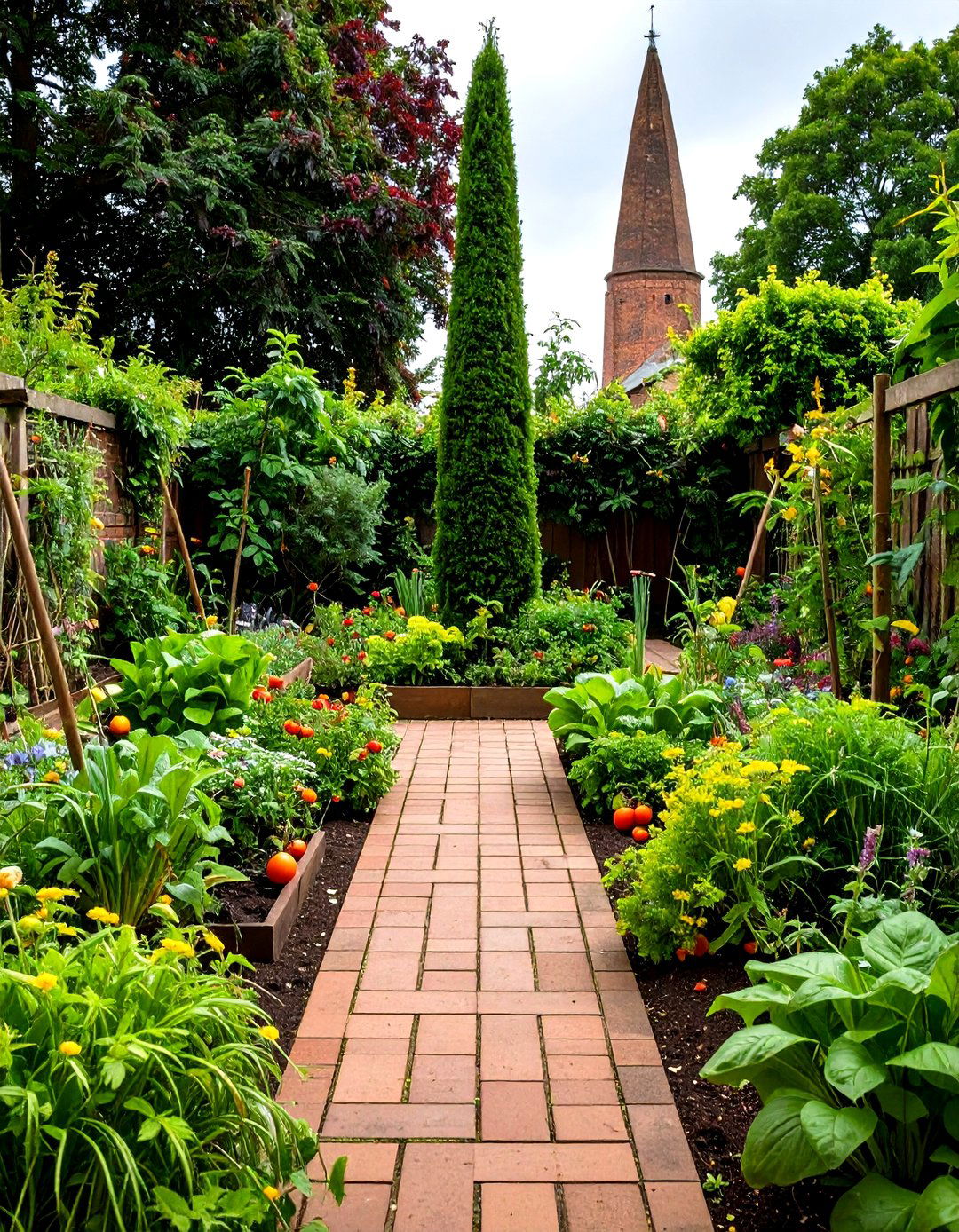
A time-tested four-square kitchen garden layout divides the plot into quadrants edged with low paths, making crop rotation almost effortless. Allocate one square each to roots, legumes, leafy greens, and fruiting crops; shift plant families clockwise every year to starve pests and balance soil nutrients. Narrow brick or gravel walkways ensure every bed is reachable without compacting soil, and a central focal point—a dwarf fruit tree, obelisk, or birdbath—adds symmetry and pollinator appeal. This structured design keeps chores organized while delivering a steady harvest right outside the back door.
2. Square-Foot Grid Garden Layout for Maximum Yield

For gardeners craving order and abundance, a square-foot grid garden layout turns a 4-by-4-foot raised bed into sixteen perfect micro-plots. Mark a wooden or bamboo grid across the surface, then follow recommended plant densities—one tomato, four lettuces, or sixteen carrots per square—to avoid crowding while squeezing every inch of productivity. Because the grid eliminates guesswork, beginners waste less seed and water, and the tidy matrix invites companion planting like marigolds with peppers for pest control. Add an arched trellis on the north side so vines climb up, not out, multiplying vertical yield without shading neighbors.
3. Vertical Fence-Line Herb Garden Layout
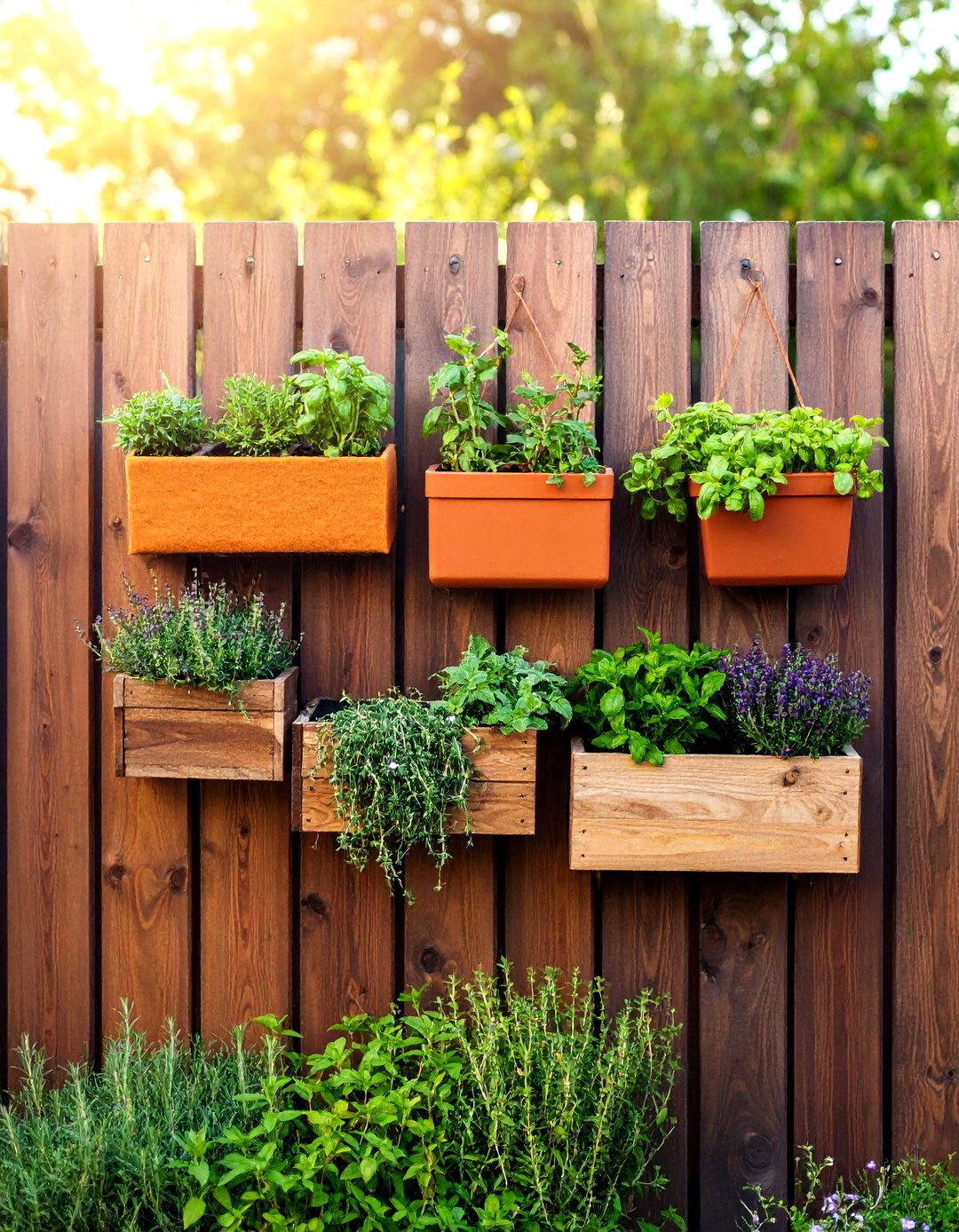
A bare fence morphs into living pantry walls when used as the backbone of a vertical garden layout. Hook stackable planters, pocket felt panels, or reclaimed pallets along the boards, filling them with aromatic herbs that stay compact—thyme, basil, mint, and lemon verbena. Stagger heights so trailing tendrils spill downward while upright rosemary anchors visual rhythm. Keep taller pots nearest sprinkler lines or add drip tubing to simplify watering chores. This strategy frees ground space for larger crops, spices meals within arm’s reach, and instantly greens up dull boundaries—ideal for renters who crave movable gardens.
4. Keyhole Garden Layout for Water-Wise Abundance
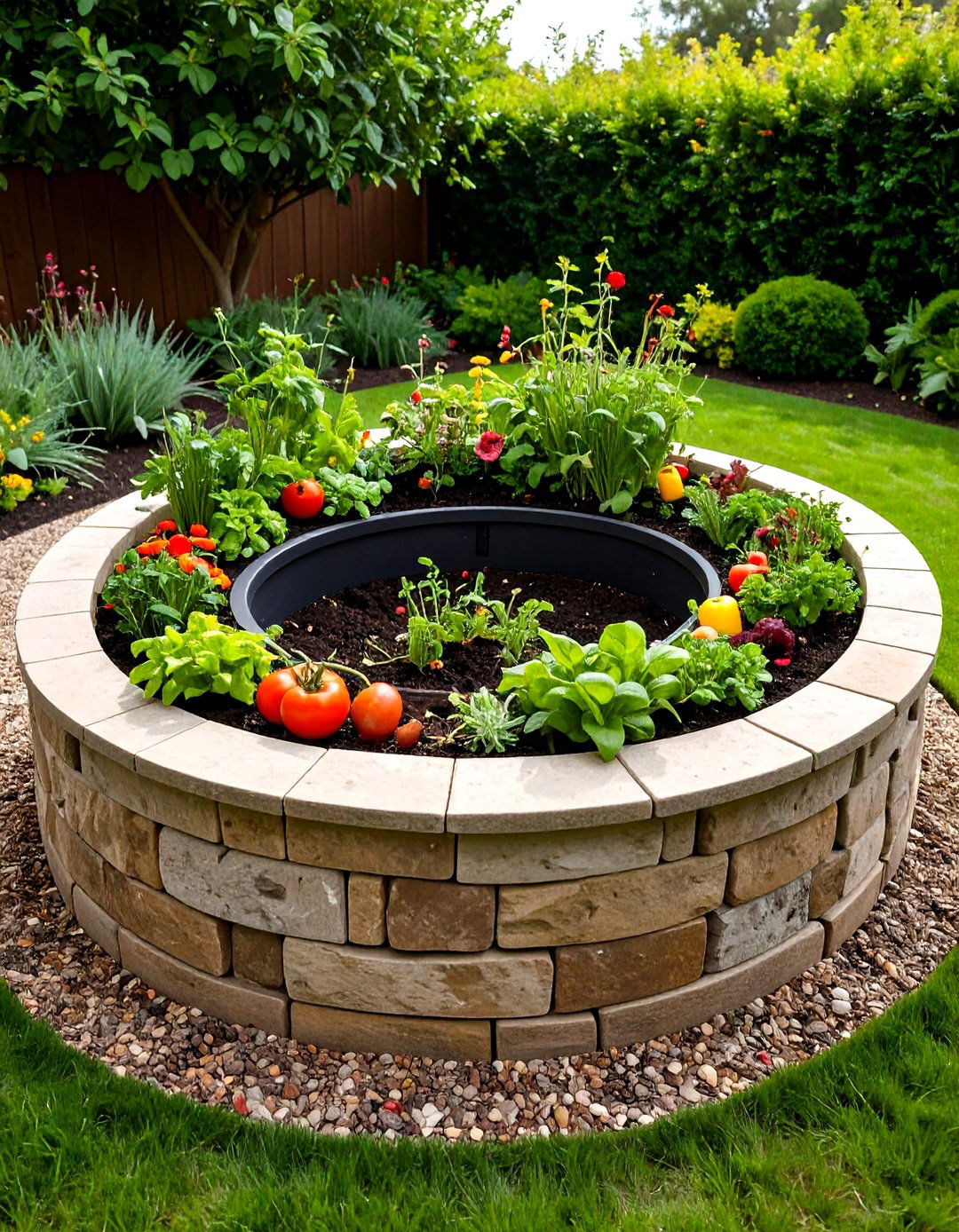
By combining a horseshoe-shaped raised bed with a central compost basket, the keyhole garden layout delivers nutrient-rich irrigation with every watering. Build stone or brick walls about thirty inches high, leaving a wedge-shaped “key” for easy access to the middle. Drop kitchen scraps into the core; as microbes break them down, moisture and fertility percolate outward, slashing fertilizer needs. Edge the rim with drought-tough herbs and reserve the moist inner ring for heavy feeders like tomatoes. Because the bed’s height reduces bending and conserves water, this design shines in hot, arid climates and busy backyards alike.
5. Spiral Herb Garden Layout with Microclimates
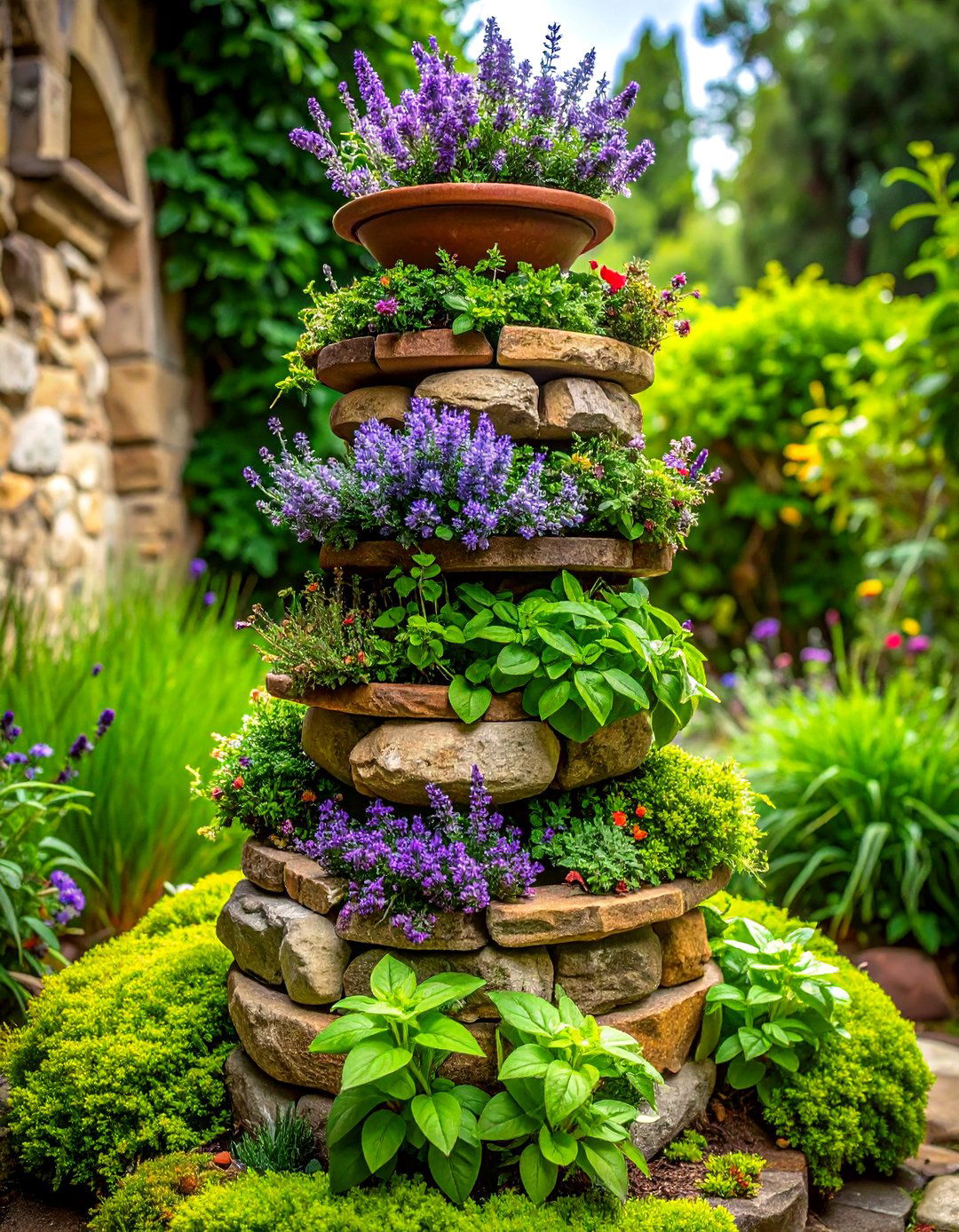
A spiral herb garden layout coils upward like a snail shell, stacking herbs in layers that capture sun, shade, and drainage gradients within just six feet of space. Dry-loving Mediterranean staples—oregano, sage, lavender—sit atop sun-baked bricks, while moisture-hungry parsley and mint nestle near the base where runoff collects. The curved path invites exploration and creates niches for beneficial insects in stone crevices. Build with reclaimed rocks or bricks piled about three feet high, filling the core with rubble for drainage before topping with rich soil. The finished sculpture is as functional as it is whimsical.
6. Pollinator Border Garden Layout Along a Path
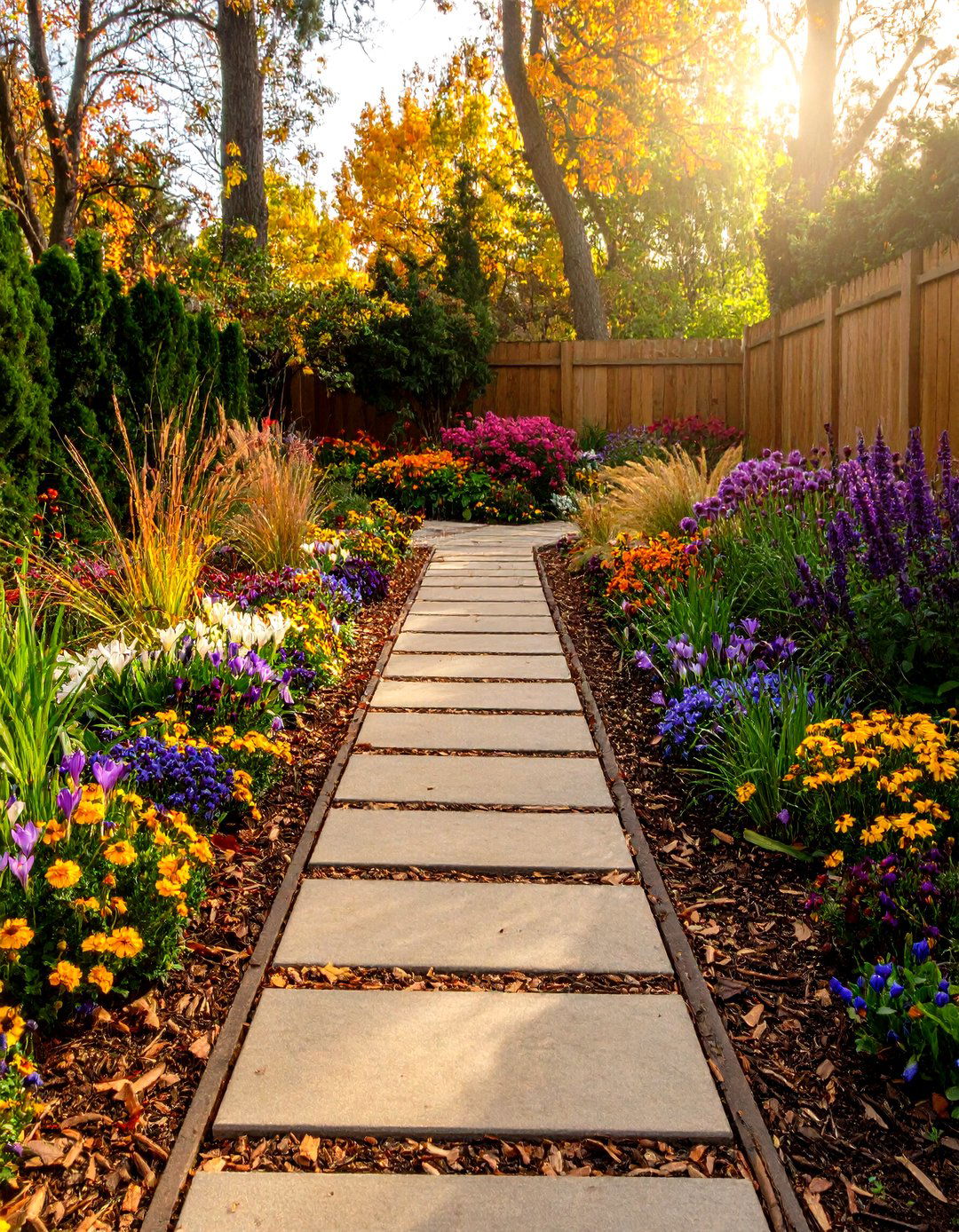
Transform a plain walkway into a buzzing corridor by planting a pollinator border garden layout on either side of the path. Stage early, mid, and late-season bloomers—think spring crocus, summer bee-balm, and autumn asters—in drifts of three to five plants for easy foraging. Layer heights from low groundcovers near the edging up to four-foot nectar spires at the back so visitors see flowers, not stems. Mulch with shredded leaves to suppress weeds and conserve moisture, and leave seed heads standing through winter to feed birds. This living border doubles as a vibrant welcome mat for both guests and beneficial insects.
7. Classic Cottage Garden Layout of Layered Heights

A cottage garden layout celebrates abundance by mixing edibles and ornamentals in lush, overlapping tiers. Start at the path’s edge with dwarf dianthus and thyme, rise to knee-high foxgloves and kale, and finish with towering hollyhocks against a fence. Curved beds break rigid lines and make every turn reveal a new color splash. Interplanting reduces pest outbreaks and keeps soil shaded, lowering irrigation needs. Because plants are jam-packed, maintenance focuses on gentle editing rather than bare-earth weeding, letting you garden more like a painter than a laborer. Even small plots feel boundless under this romantic scheme.
8. Permaculture Zone-One Garden Layout Near the Door
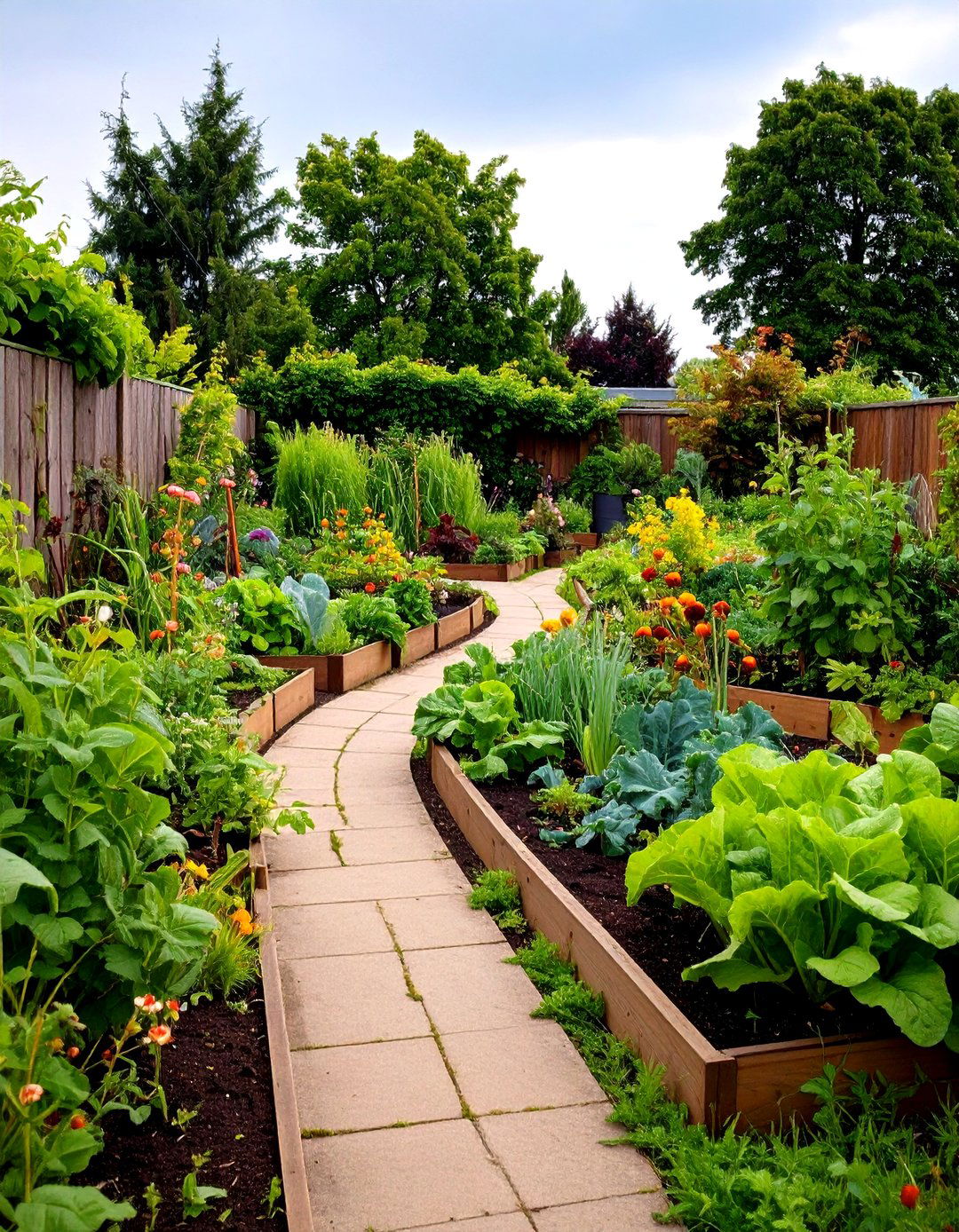
Permaculture teaches situating the most-used crops within a few steps of the kitchen, and a zone-one garden layout embraces that efficiency. Cluster salad greens, culinary herbs, and snack vegetables along a looping path from back door to compost bin, keeping beds no wider than arm’s length. Add a rain barrel at the roof downspout and direct overflow to a shallow swale planted with rhubarb that loves extra moisture. Perennial borders of chives and strawberries soften bed edges while providing continuous harvests. By aligning work and yield with daily foot traffic, this design saves time and maximizes freshness.
9. Xeriscape Garden Layout for Drought Defense

In regions where rainfall is scarce or unpredictable, a xeriscape garden layout mixes sculptural hardscape with drought-tough plant zones to cut water use dramatically. Group succulents, ornamental grasses, and native perennials by moisture need—thirstiest near the hose, toughest farthest away—to prevent overwatering. Gravel or decomposed granite paths double as passive rain catchment, directing runoff toward swales lined with deep-rooted shrubs. Layer organic mulch three inches thick to shield soil from evaporation. The result is a low-maintenance oasis that thrives on neglect yet still dazzles with texture and bloom.
10. Moon Garden Layout that Glows at Night

A moon garden layout orchestrates silver foliage, white petals, and night-blooming scents to shine under starlight. Arrange luminous plants—white phlox, silver artemisia, and fragrant night-scented stock—in concentric rings around a light-colored gravel patio so petals catch and reflect moonbeams. Include a water bowl to mirror the sky and amplify soft illumination. Choose pale steppingstones that guide evening strolls without artificial lighting. Because many night-bloomers attract moths and bats, this design extends pollinator service past sunset while providing a serene after-work escape.
11. Balcony Vertical Garden Layout for Renters
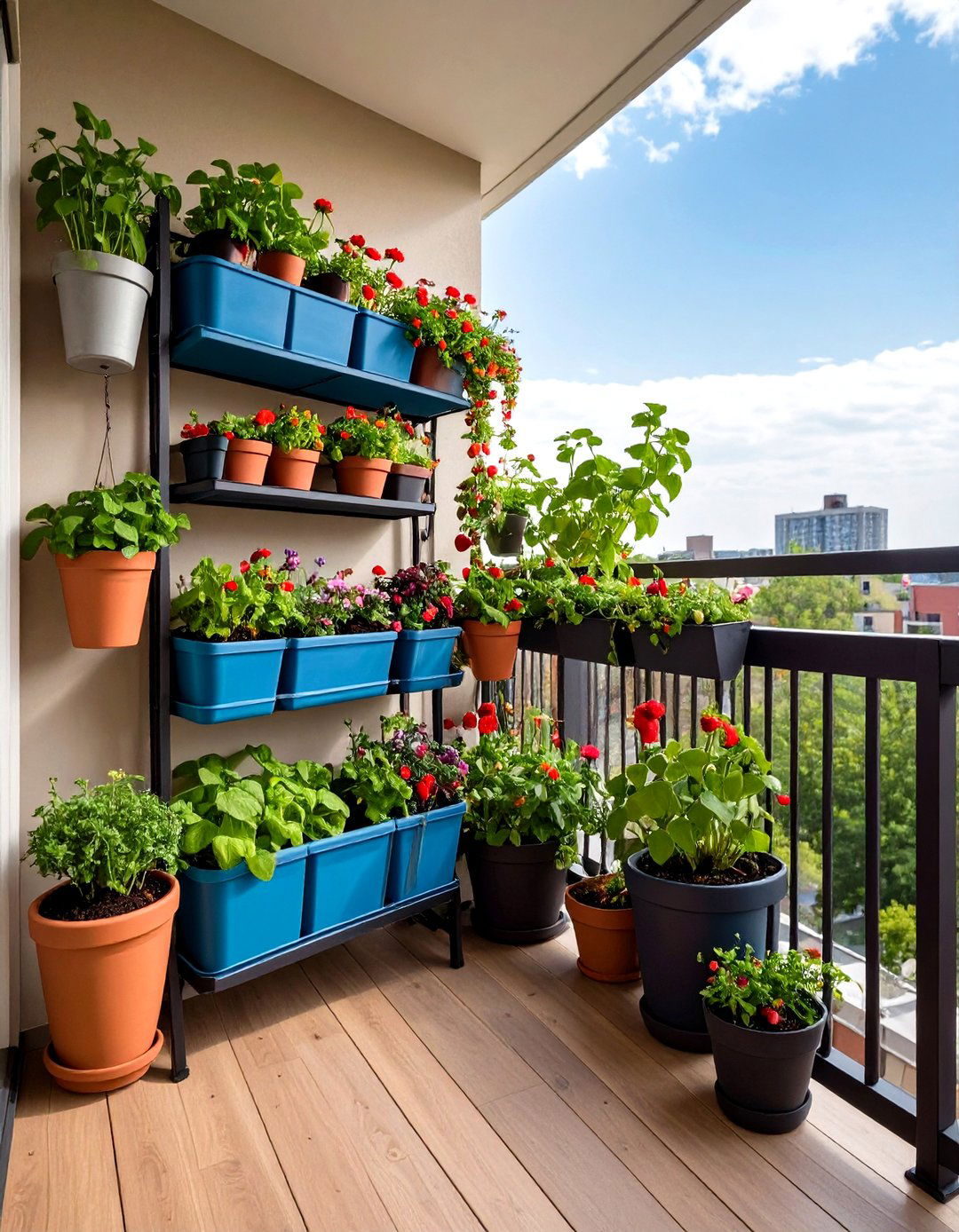
Apartment dwellers can harvest plenty by adopting a balcony vertical garden layout. Mount stackable shelves against the wall, hang fabric pockets from railings, and suspend trailing strawberries in ceiling baskets to exploit every plane of airspace. Place heavier containers on the floor near load-bearing corners and secure trellises for climbing beans along sidewalls to create living privacy screens. Install self-watering planters or drip lines on a timer to keep upkeep minimal during hot spells. Because containers are portable, you can chase sun angles seasonally or take the whole garden when you move.
12. Container Cluster Patio Garden Layout

A container cluster garden layout transforms patios into flexible fusion plots. Group pots of varied heights and diameters in loose triangles rather than straight rows, letting foliage overlap and create the visual mass of an in-ground bed. Wheel the thirstiest pots together so one hose blast suffices, and set dwarf fig or bay trees as vertical anchors. Swap cool-season pansies for summer peppers without disturbing neighbors, and slide specialty planters—like potato bags—forward when harvesting. This movable mosaic keeps small spaces lively year-round while letting you edit style with seasonal color.
13. Round Raised-Bed Island Layout
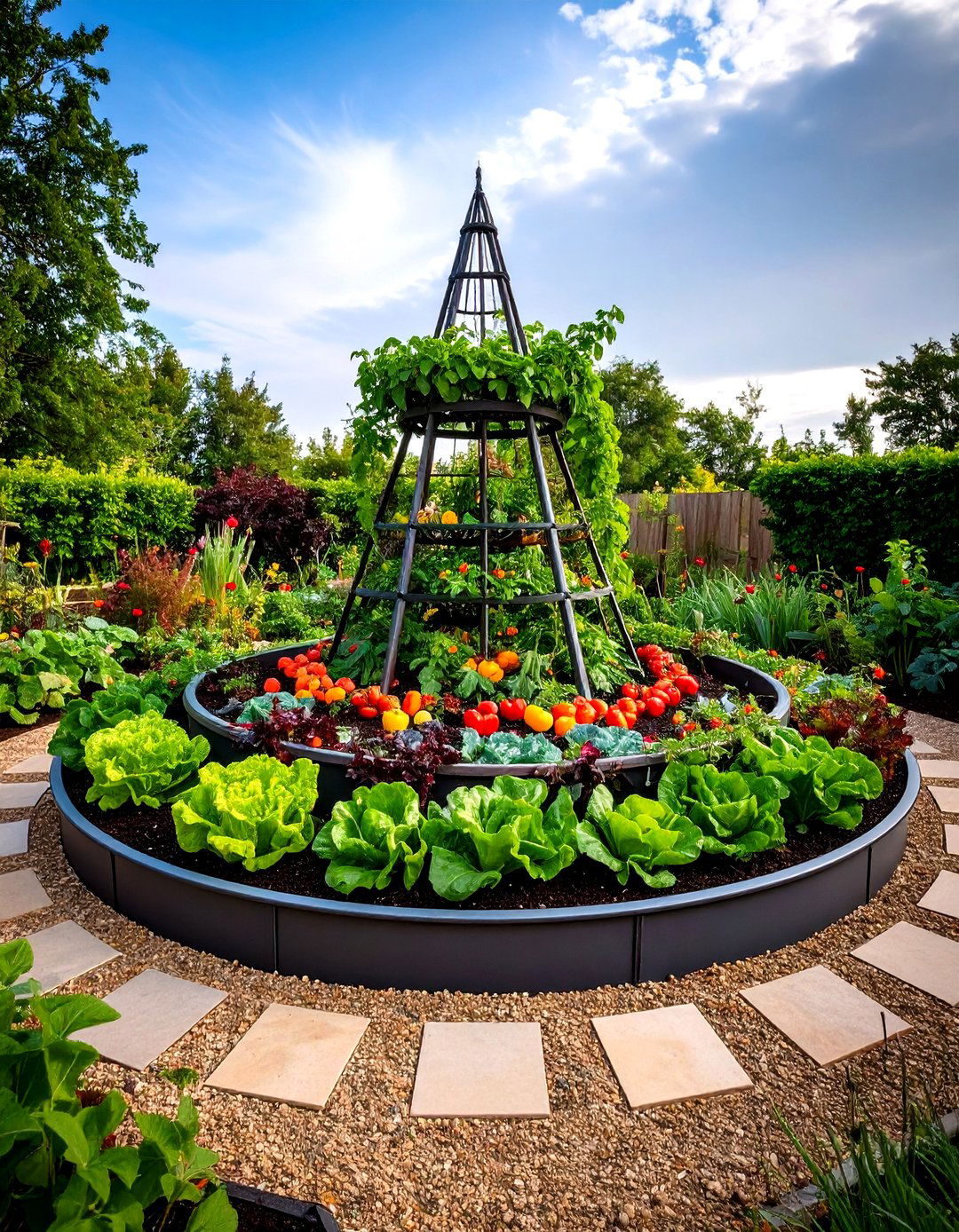
For a statement centerpiece, build a round raised-bed island garden layout edged in recycled metal or stacked stone. Radiate steppingstones outward so you can reach the center without stepping in soil, and orient taller crops toward the north to avoid casting shade on shorter companions. The curved profile holds more soil volume than a rectangle of equal footprint, buffering roots against temperature swings. Plant cut-and-come-again lettuces along the rim, mid-height peppers midway, and a trellised teepee of beans in the center to maximize layers. The circular shape invites strolling and turns maintenance into a leisurely spin.
14. Wildlife Corridor Hedgerow Garden Layout

Link habitat pockets by tracing a wildlife corridor garden layout along property lines. Alternate native shrubs that fruit at different times—serviceberry, hazelnut, dogwood—so food and shelter span the seasons. Keep the strip at least ten feet deep and let leaf litter accumulate beneath for overwintering insects. Add a meandering mown path through the middle so you can observe visiting birds without disturbing nests. This living fence muffles wind, screens views, and reinvigorates local biodiversity, proving functional boundaries don’t need boards or wire.
15. Front-Yard Edible Landscape Garden Layout
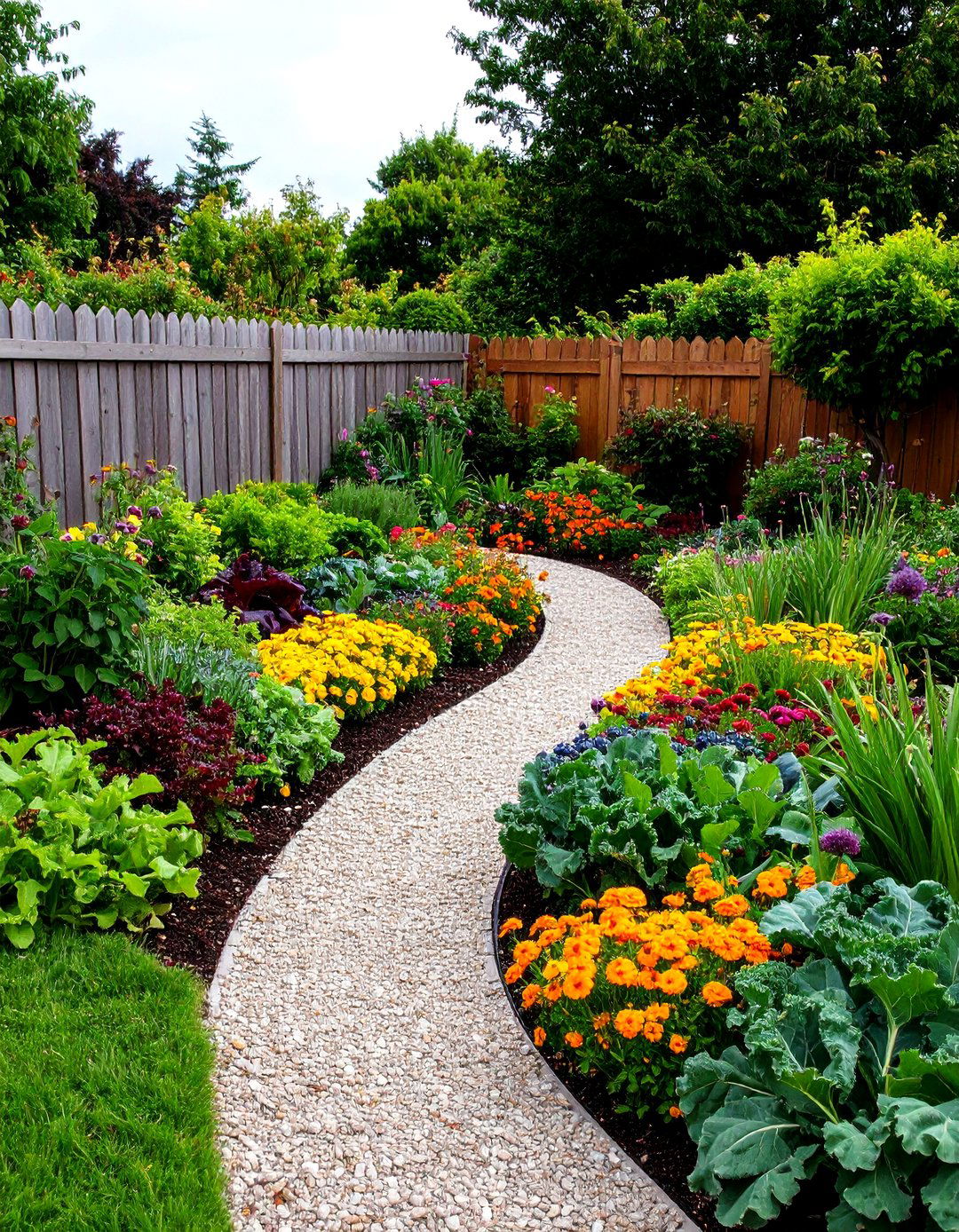
A front-yard edible landscape garden layout blurs the line between utility and curb appeal. Replace a traditional foundation shrub row with artful tiers of kale, rainbow chard, and dwarf blueberry, then weave marigolds and ornamental alliums among vegetables to deter pests and delight passers-by. Curved gravel paths keep shoes clean while showcasing tidy beds, and a low, decorative fence signals care to neighbors. Because edible ornamentals grow at varied heights and colors, the facade remains attractive even after harvesting, offering a tasteful response to homeowners’ association concerns.
16. Succession Planting Garden Layout for Continuous Harvests
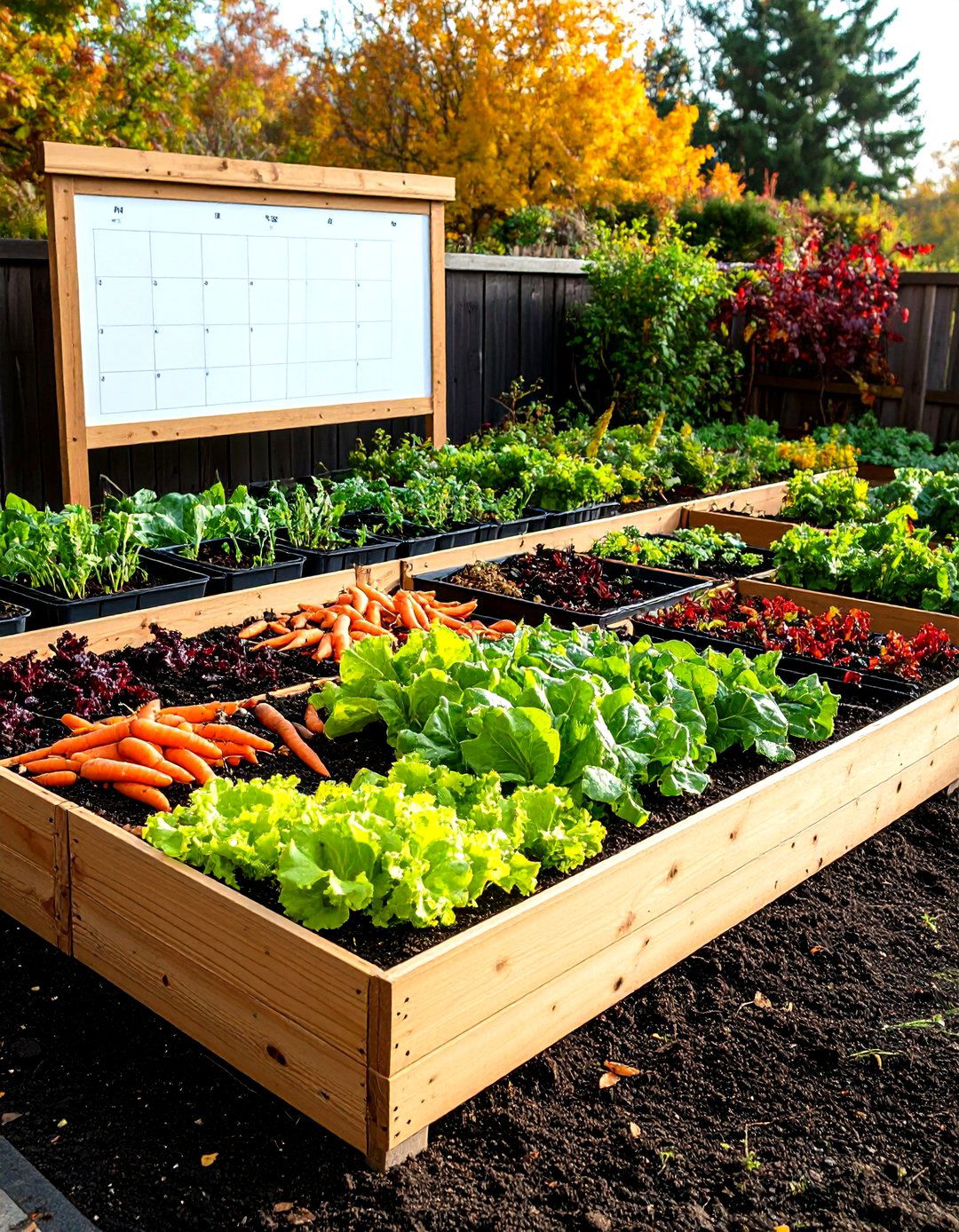
A succession planting garden layout treats each bed like a conveyor belt, slotting cool-season crops, warm-season staples, then fall greens in the same footprint. Sketch a calendar on a whiteboard, noting sow dates and expected pull dates, and keep spare seedlings in cell trays to fill gaps fast. Pair shallow-rooted lettuce with deep-rooted carrots so soil nutrients aren’t exhausted at once. Cover spent areas with compost after each swap to recharge fertility. This rolling approach boosts total yield dramatically and keeps soil covered year-round, discouraging weeds between rotations.
17. Modular Planter Box Grid Garden Layout

Busy schedules welcome the plug-and-play rhythm of a modular planter box garden layout. Arrange identical cedar crates in a checkerboard, leaving equal-width paver squares between for kneeling or rolling carts. Because each box is a standalone system, you can tweak soil blends—acidic for blueberries here, sandy for carrots there—without fuss. Snap-on drip headers distribute water evenly, and swapping a whole box at season’s end simplifies crop rotation. Stack two units where deeper root zones are needed, and drop dwarf trellis frames into corner joints for fast vertical expansion.
18. Sensory Garden Layout for Children
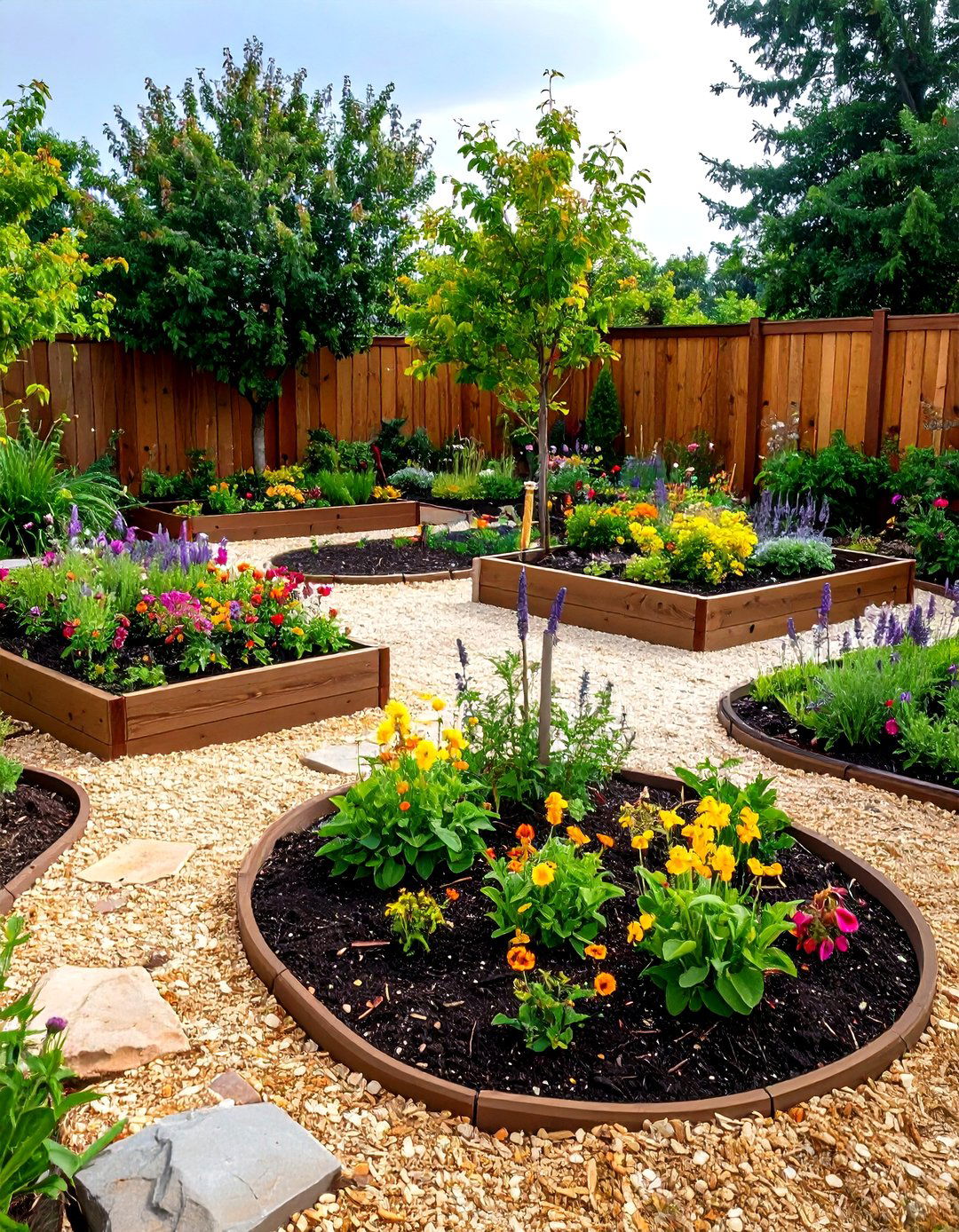
Inviting children outdoors starts with a sensory garden layout designed at kid height. Curve a looping path of soft mulch around raised beds no taller than eighteen inches, letting young gardeners see, touch, and taste without stepping on soil. Cluster fuzzy lamb’s-ear near the entry, plant snapdragons to “snap,” and tuck fragrant lemon balm along edges. Include a wind chime tree and a shallow birdbath for auditory and visual stimulation. Build one digging pit filled with loose compost so curiosity has a sanctioned outlet. This multi-sensory space nurtures mindfulness while teaching ecological stewardship early.
19. Rain Garden Layout Around a Swale
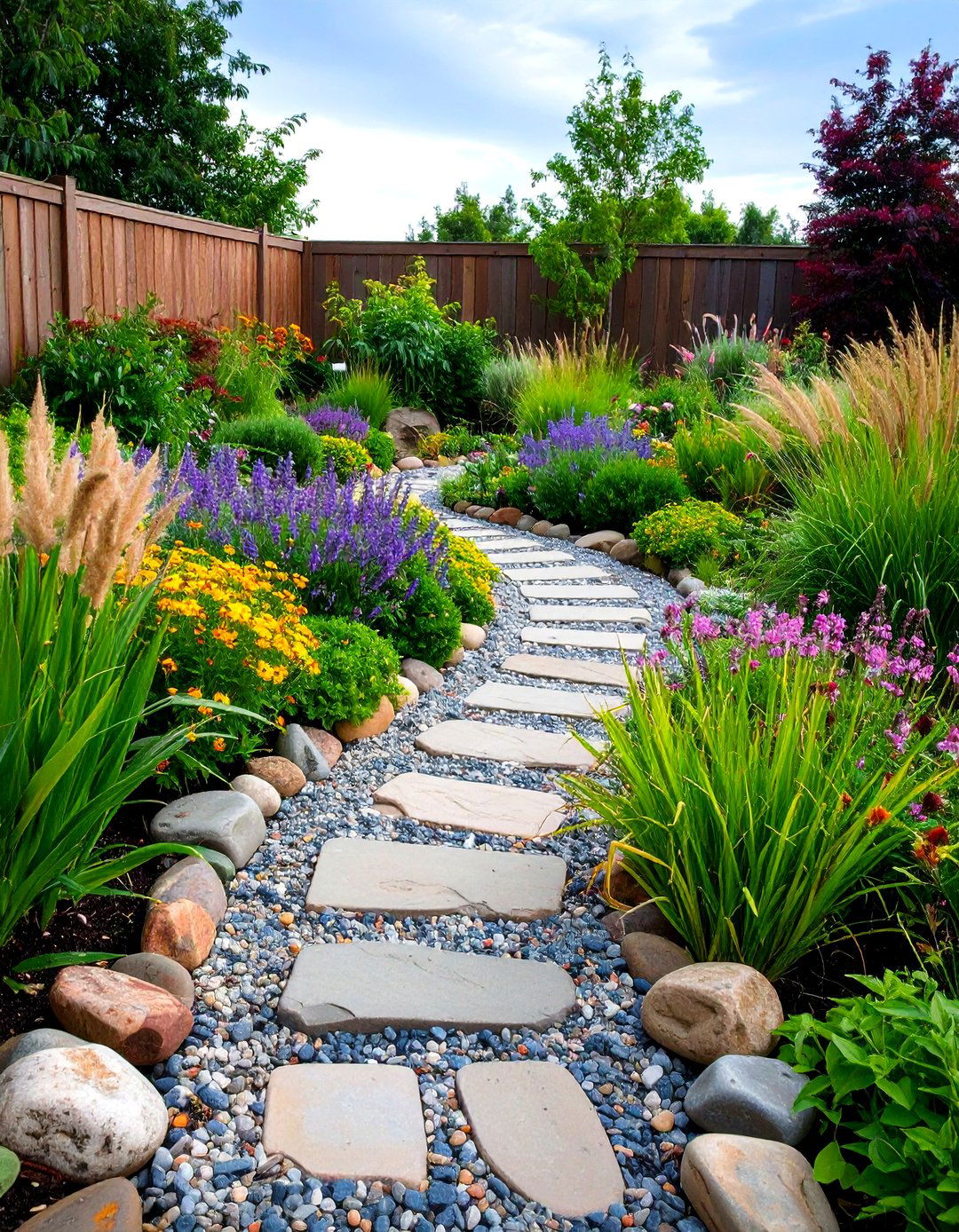
Capture stormwater and beauty together with a rain garden layout positioned at the foot of a downspout or slope. Excavate a shallow basin and line the uphill edge with gravel swales to slow runoff. Plant deep-rooted natives like switchgrass, Joe-Pye weed, and swamp milkweed in moisture zones—wettest center, drier rims—to filter pollutants and prevent erosion. A surrounding ring of river rock visually marks the basin and provides a maintenance path. During heavy downpours the garden fills like a temporary pond, then drains within 24 hours, turning a former problem into pollinator habitat.
20. Meditation Seating Nook Garden Layout

Finally, blend reflection with cultivation by carving a meditation nook garden layout into one corner of the plot. Place a simple bench or stone slab under an arch of climbers—maybe fragrant jasmine—so you can watch bees work without distraction. Surround the seat with calming foliage such as ferns and soft grasses, arranging steppingstones that discourage rushing. Add a small water feature for gentle sound, and flank the path with low culinary herbs to release scent as you brush by. Integrating restful seating completes the garden’s purpose: feeding body, soul, and imagination in equal measure.
Conclusion:
Every garden layout above proves design is less about square footage and more about strategic intention. Whether you opt for a structured four-square, a wildlife corridor, or a moonlit haven, align plant choices with climate, water availability, and personal habits to multiply success. Mixing layouts—pairing a container cluster near the kitchen with a hedgerow at the boundary—creates year-round resilience, richer biodiversity, and continual harvests. Let these ideas inspire experimentation, knowing that thoughtful planning today lays the groundwork for seasons of beauty, flavor, and ecological harmony ahead.


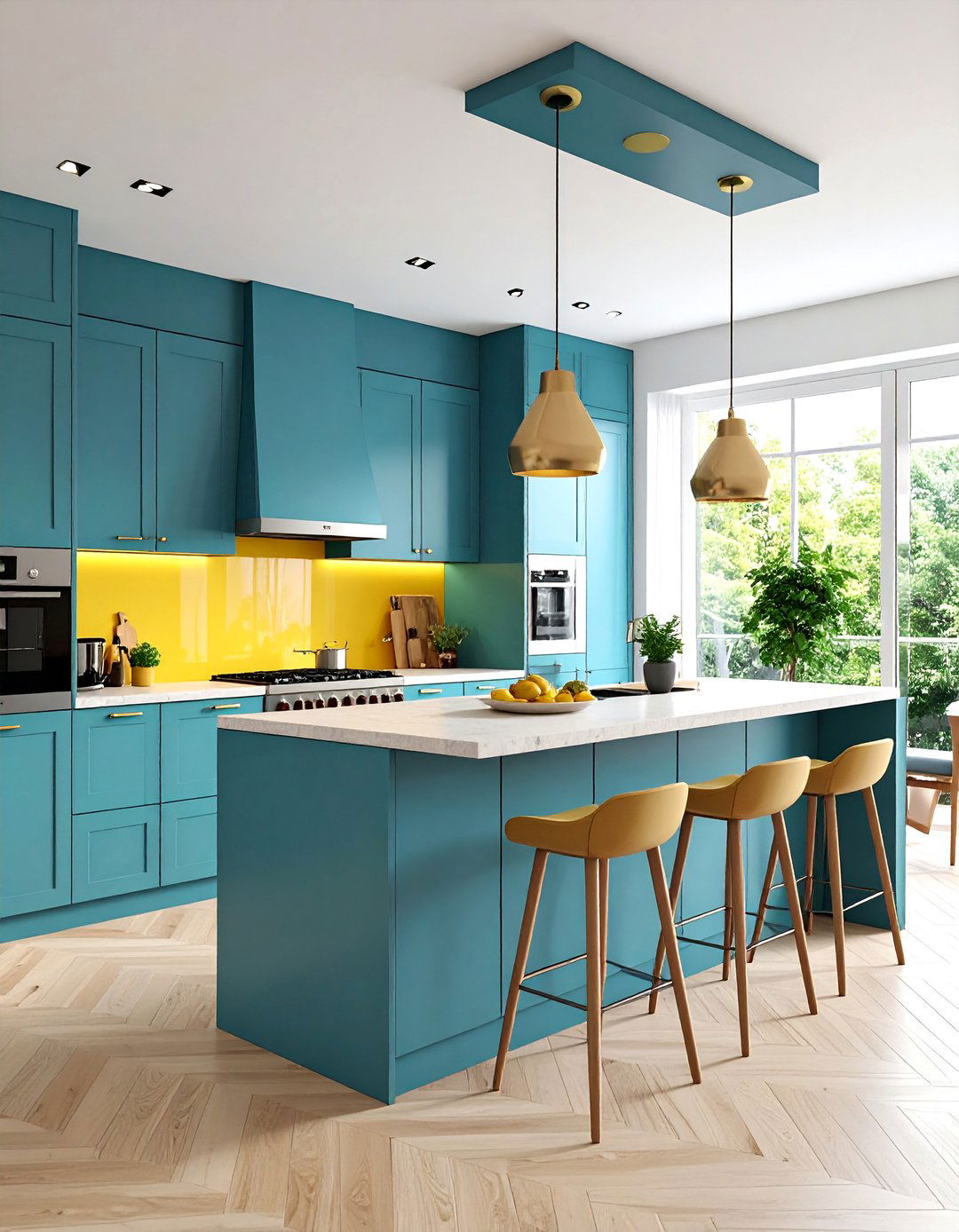



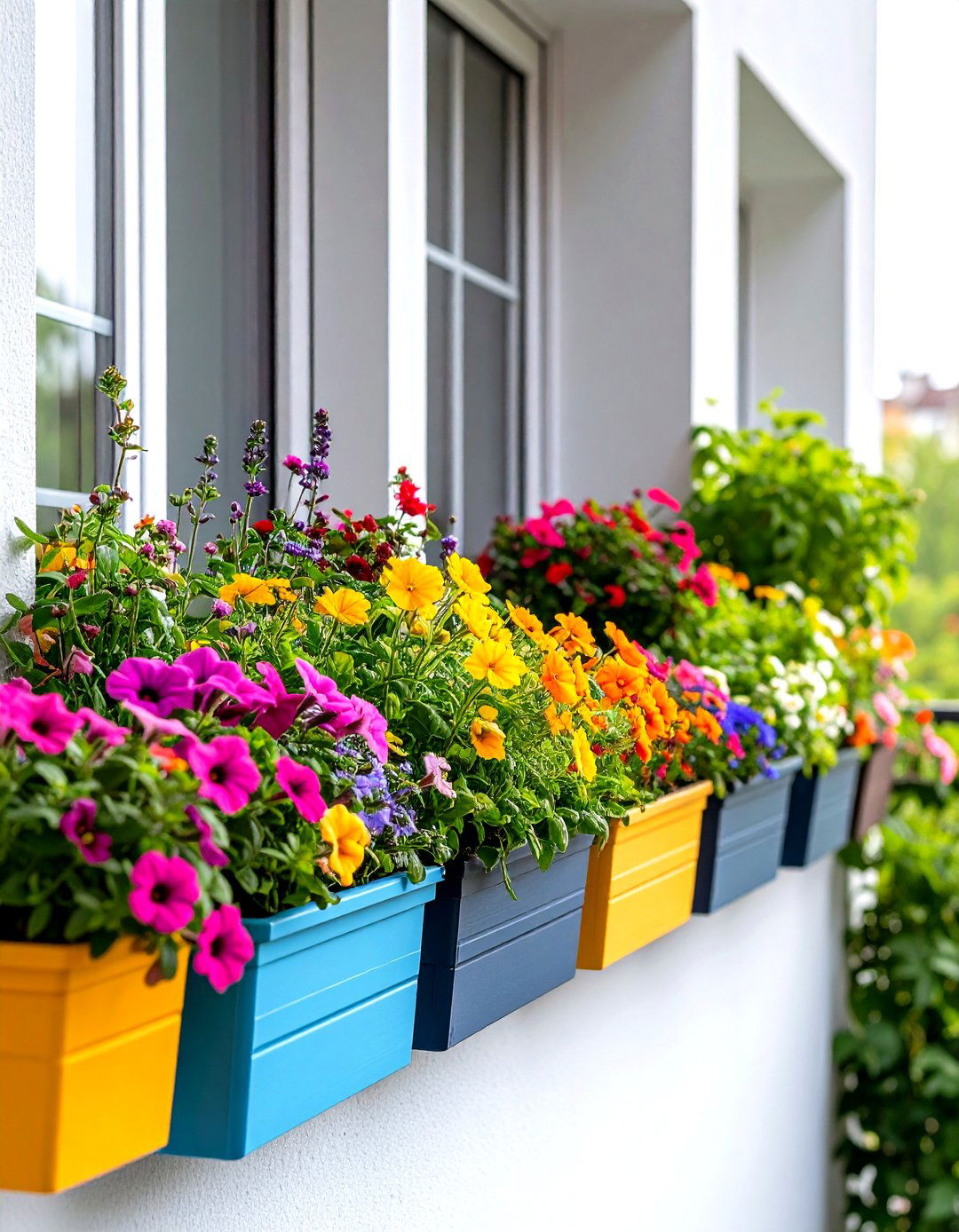
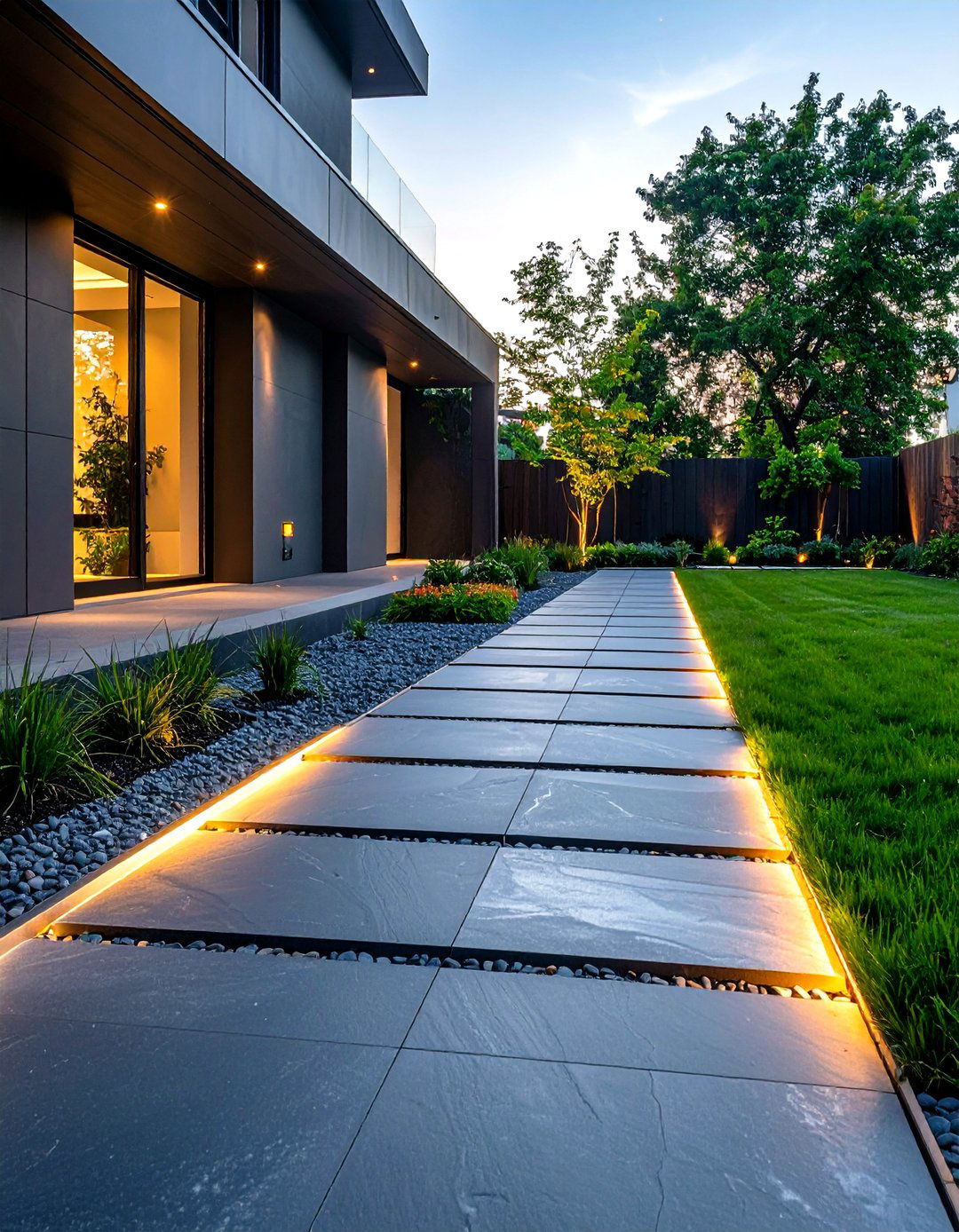

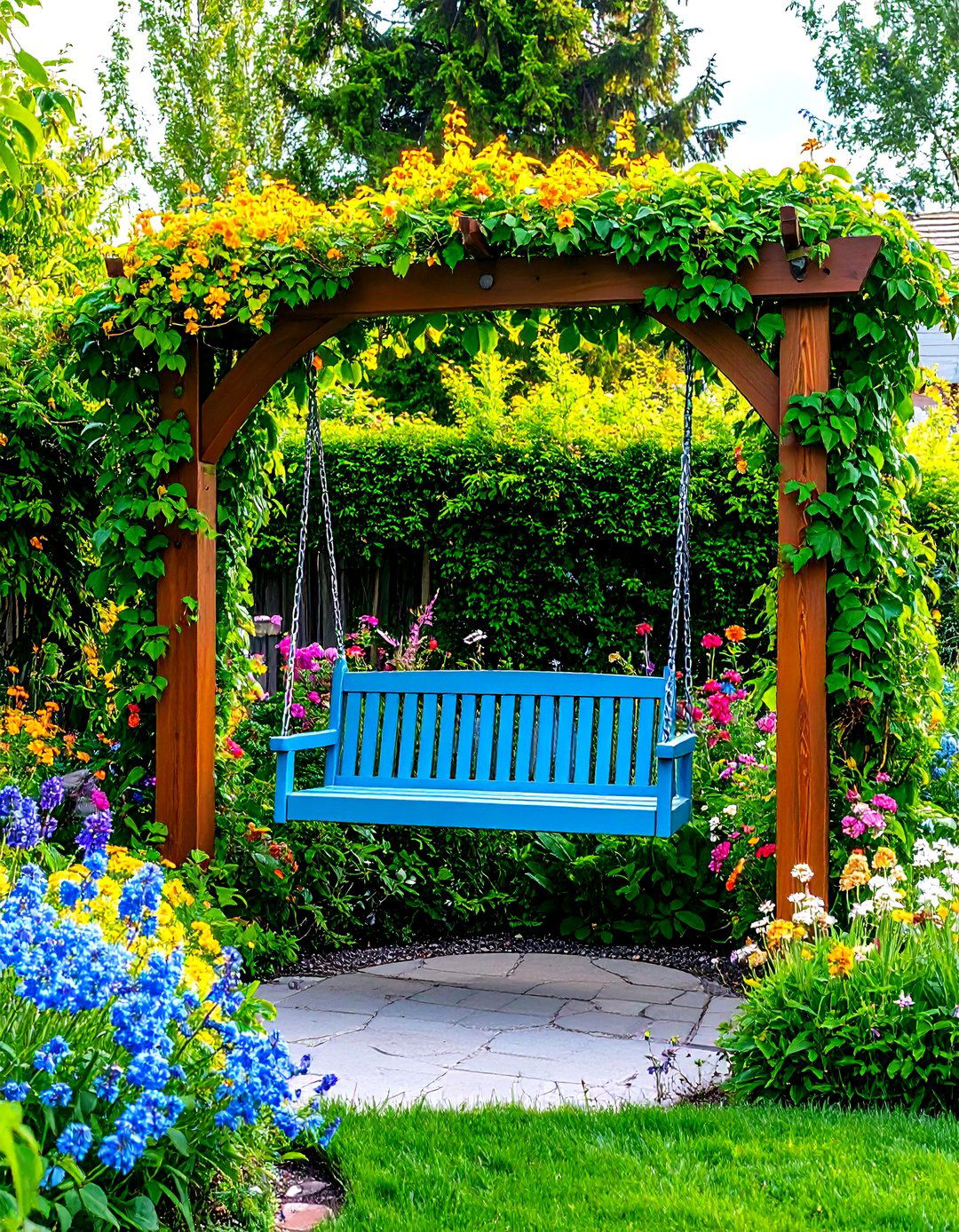

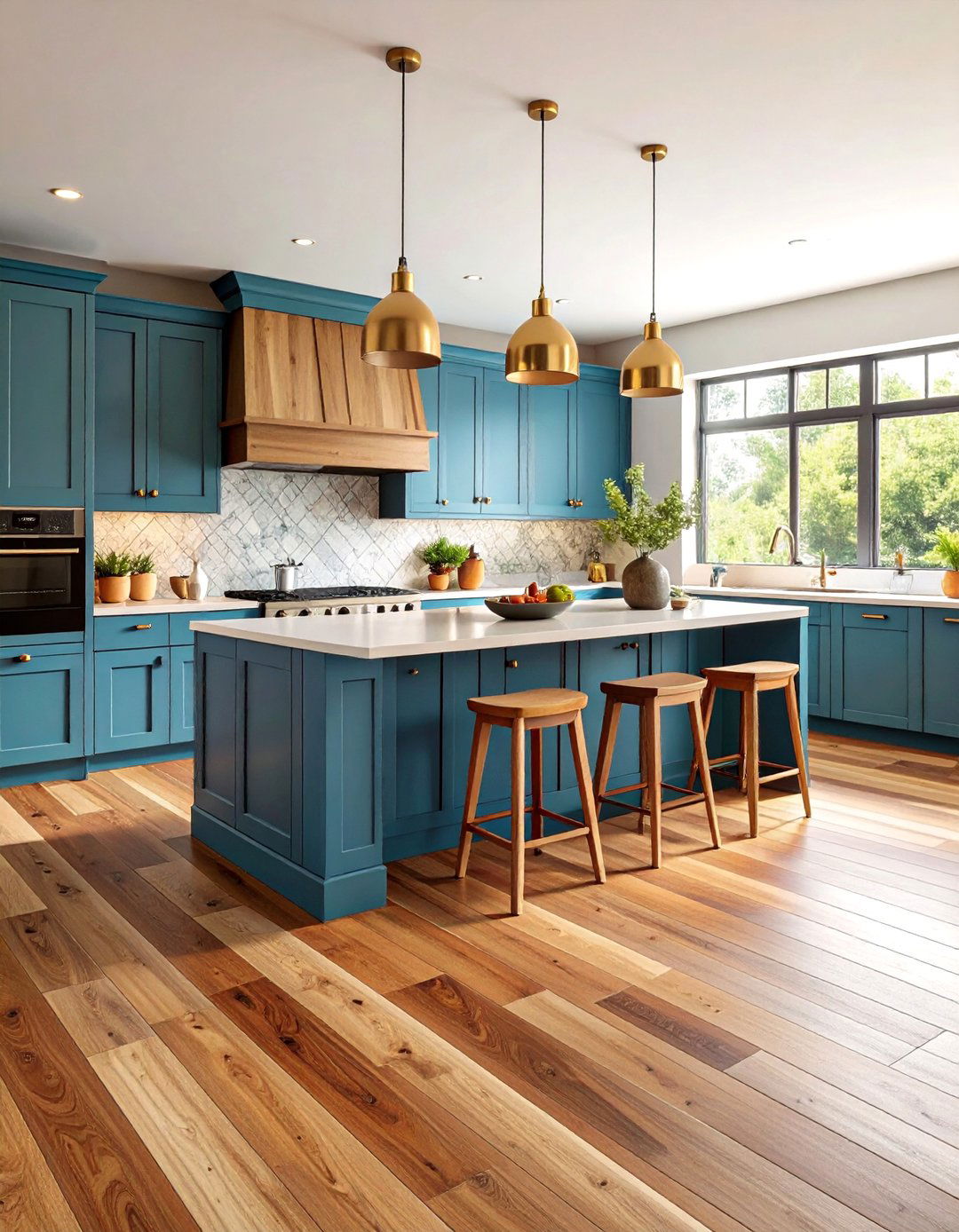
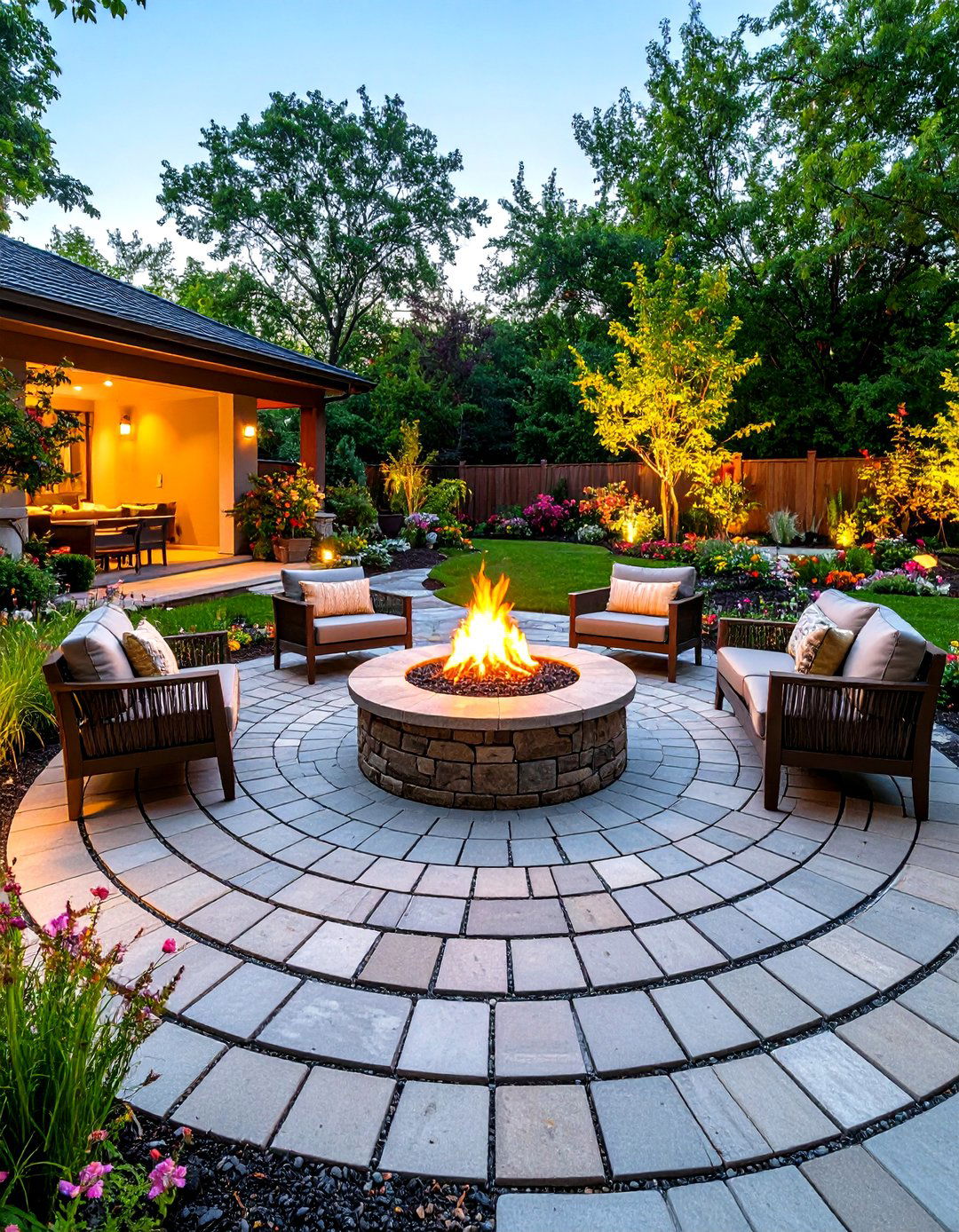
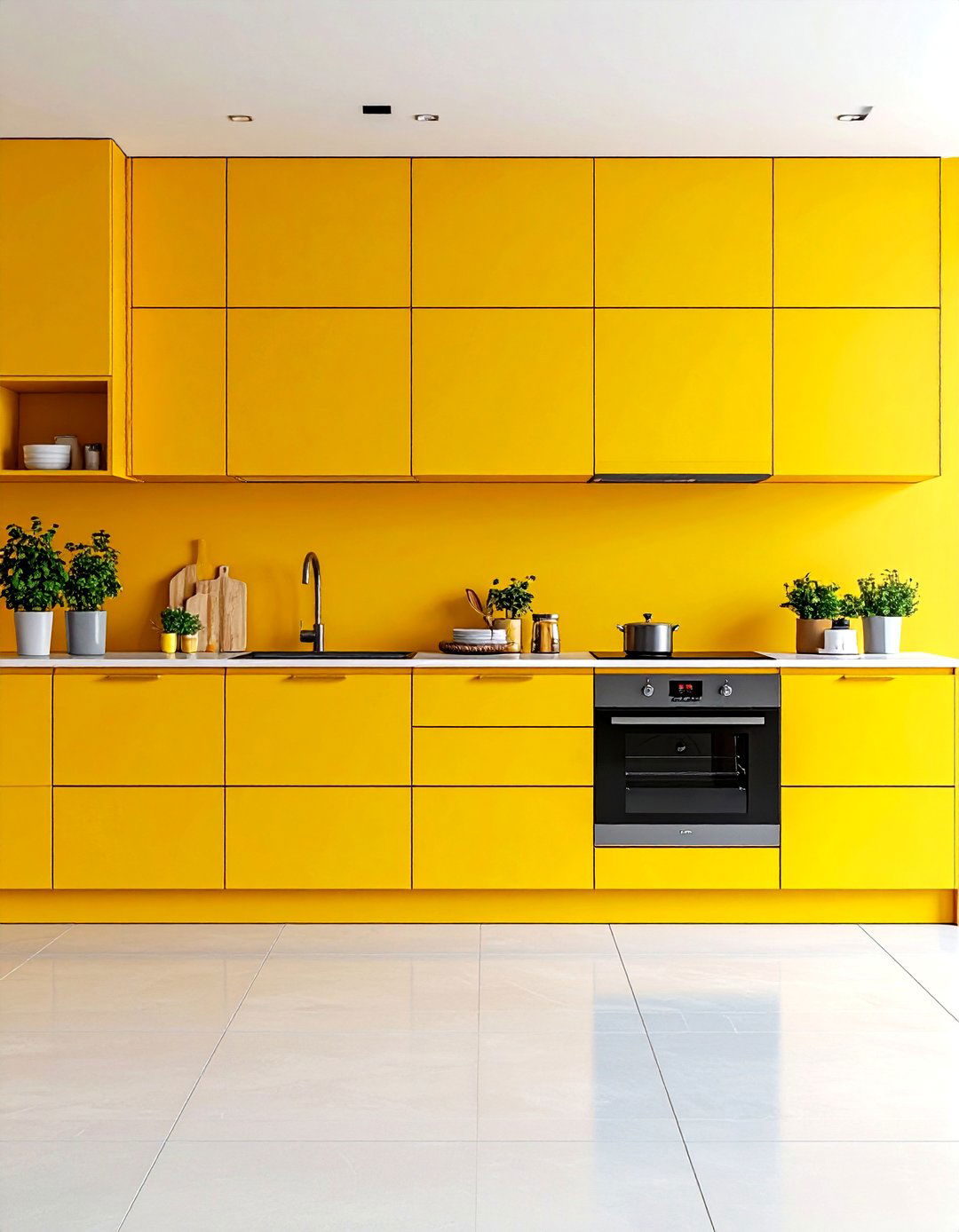



Leave a Reply